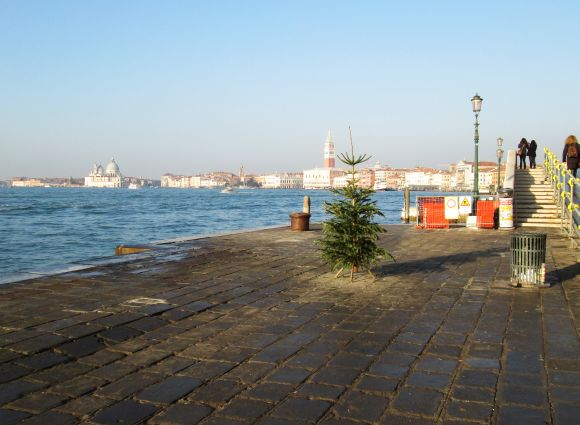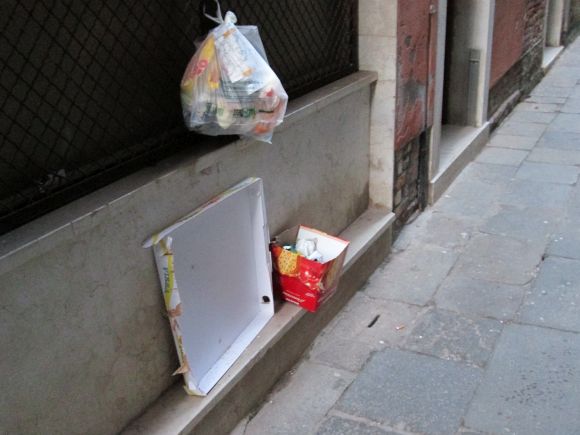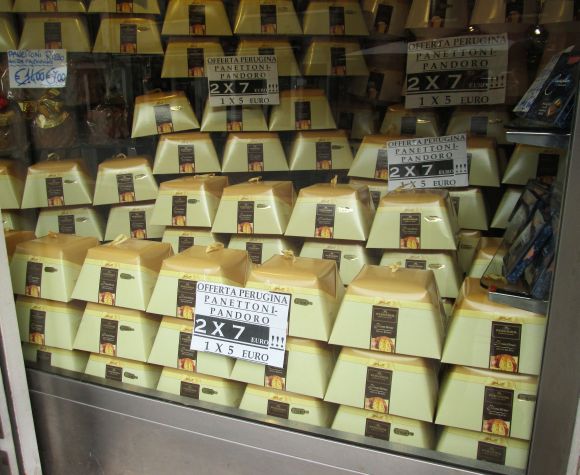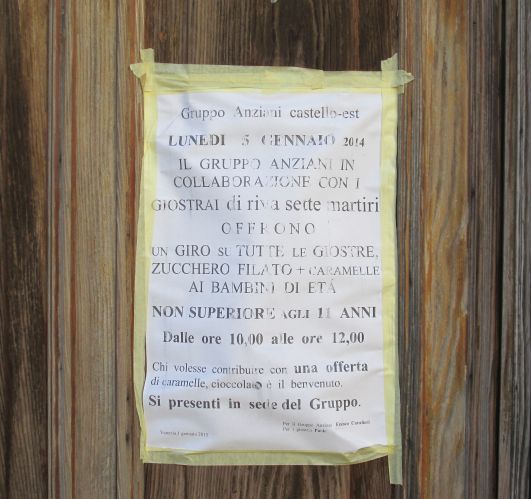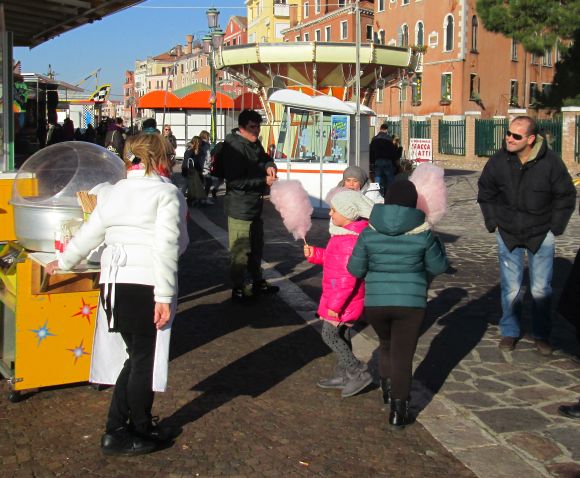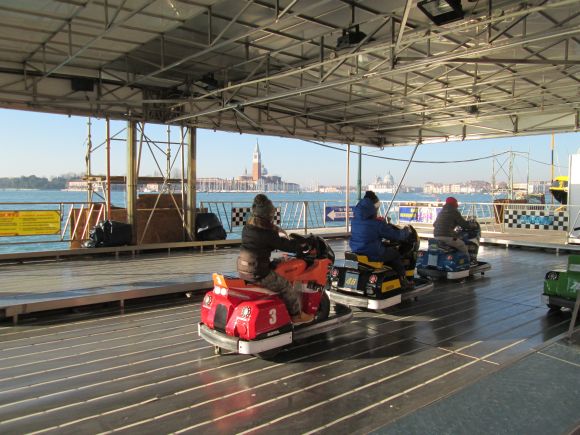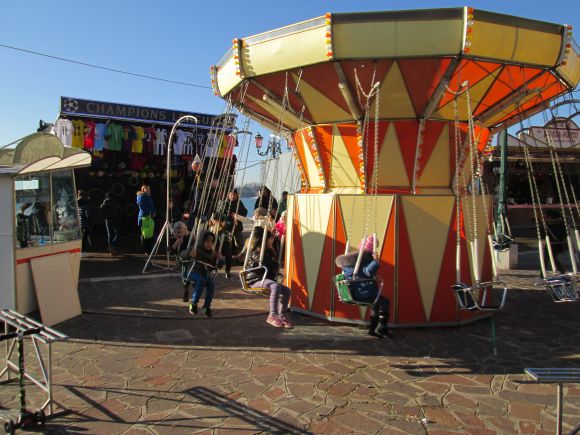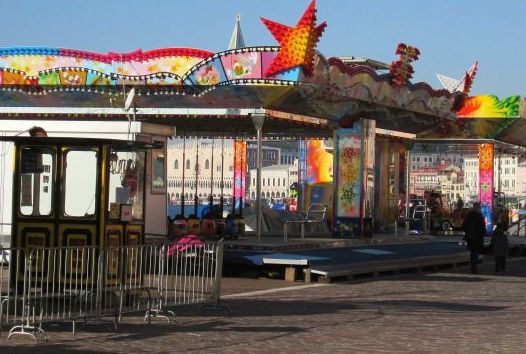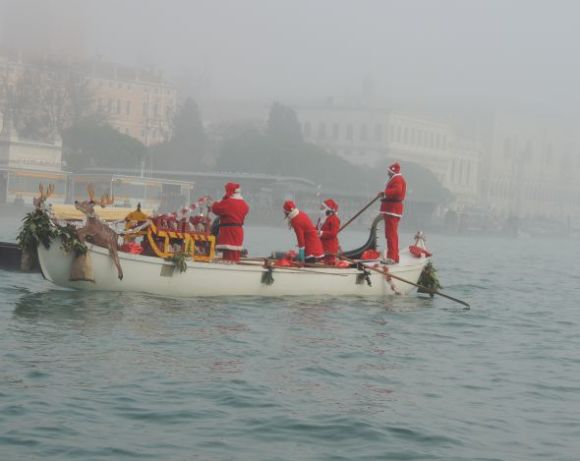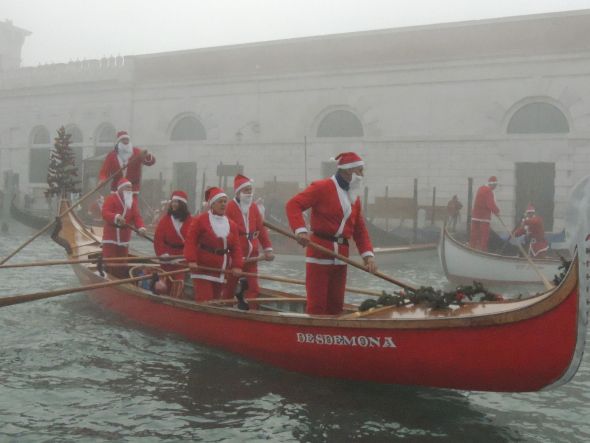
The year has started with a spontaneous act of courage which has heartened many people, especially those whose default opinion of humanity is not lovely at all.
It was December 31 — New Year’s Eve, around 3:00 PM. Muhamed Pozhari, a 25-year-old illegal immigrant from Kosovo who kept body and soul connected by day work as a mason, was pushing a handtruck loaded with bags of cement from Piazzale Roma to Rialto.
As he began to horse the heavy load over the bridge spanning the rio dei Tolentini, he heard cries. A man, soon identified as Maurizio Boscolo, 63, had fallen in the canal. Theories were contradictory but it seems that he slipped while attempting to recover his 20-euro banknote which had somehow wafted into the water. Boscolo was (understandably) flailing around, with few or no results. It didn’t look good.
According to reports, various passersby stopped passing by and stood there, looking. I can understand the stopping; I can’t understand the standing there. (One report says that at least one person began to take photographs, but I have completely shut my mind to that, especially if it’s true.)
“I was crossing the bridge when I saw the man who had slipped and fallen in the water,” Pozhari later recounted. “He was looking me in the eyes, desperate. Everybody was standing there looking and I felt like I had to do something. I jumped in to save him.
“The water was very low and he was sinking in the mud. I tried to pull him up but in doing that I was also sinking in the mud. Then two people came to help.”
Muddy, freezing, soaking wet, the two men were hauled ashore. Pozhari no longer had his cell phone or his ID or his money, because he hadn’t stopped to take them out of his pockets before plunging in. Boscolo, however, no longer had his 20 euros or, not long afterwards, his life.
The excitement was now divided between the victim and the savior. Some people offered Pozhari money, which he refused. Staff at the nearby Hotel Papadopoli asked him to come in and have a hot shower, but he refused because he didn’t want to have to start answering awkward questions about his identity and all. However, an architect whose studio was nearby, Pozhari later related, induced him to come inside, where he accepted a shower and a change of clothes, and some pocket money.
Then Pozhari went home, back to the mainland where he was staying with friends. I suppose he intended to just disappear again into his under-the-radar world, complete with post-trauma insomnia, except that that night he began to feel ill. Freezing temperatures and possible mouthfuls of canal water and, I imagine, also emotional stress, were having their effect. So he went to the Emergency Room, where he was kept overnight in observation. He must have been feeling seriously bad, considering how eager he had been hours before to avoid awkward questions, the kind of questions they also ask on hospital intake forms.
When he eventually learned that the man he’d tried to save had died, he began to cry. In any case, he hadn’t been able to sleep “for two nights,” he said. “But if I hadn’t tried to do something, I’d never sleep again.”
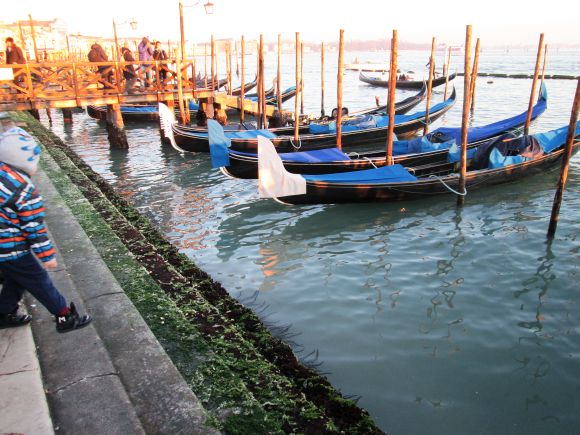
Now the story takes a happy turn. He’s been in Italy for five years; three years ago he applied for an immigrant permit (permesso di soggiorno) as a political refugee. His request was denied, and he was marked for expulsion, but he decided to stay anyway, which explains his need to remain invisible to people in uniform.
But now, in the space of not even two weeks, his application for a permesso for “humanitarian reasons” has been granted. Furthermore, a friend and fellow Kosovaro has stated he’s ready to give him a full-time job and stand as guarantor for him in any way that might be necessary.
Many studies have been conducted to analyze heroic actions, why one person will jump into the water fully clothed to rescue someone while another stops to take a picture. But one thing strikes me: Pozhari’s comment that the victim was looking him in the eyes.
I once read of a German fighter pilot during World War II who shot down a number of British planes in an aerial battle, and seriously damaged another. As the German approached to deliver the fatal blow, the two pilots locked eyes. The German flew away.
An article in Scientific American entitled “How the Illusion of Being Observed Can Make You a Better Person” (by Sander van der Linden, May 3, 2011) explains that “Humans (and other animals) have a dedicated neural architecture for detecting facial features, including the presence of eyes. This built-in system, also known as “gaze detection,” served as an important evolutionary tool …. What’s interesting is that this system largely involves brain areas that are not under voluntary control. Experiments have shown that people are unable to inhibit responses to gaze even when instructed to.”
I’m not saying that I think that Pozhari wouldn’t have leaped if Boscolo’s eyes had been closed. After all, it wasn’t the eyes that conveyed the information that he was in danger of drowning — anybody could see that. But they did convey desperation, and Pozhari couldn’t not respond.
So in a strange way, now that I think about it, Boscolo saved Pozhari.

